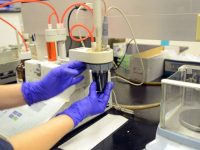Understanding Oil Viscosity: The Thick and Thin of It If you have a gearbox with a manufacturer’s nameplate instructing you to use the American Gear Manufacturer’s Association (AGMA) #4 viscosity oil at a given operating temperature, or if it specified a 750 SSU viscosity oil, would you know exactly what viscosity oil you need? If…
Read more
Understanding Oil Viscosity: The Thick and Thin of It






